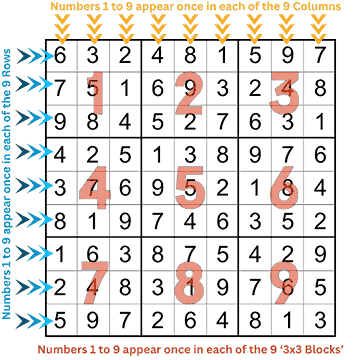Table of Contents
- Introduction: The Logical Path to Sudoku Mastery
- Understanding the Sudoku Basics
- Recognizing Key Patterns in Sudoku
- Beginner-Friendly Strategies
- Advanced Strategies for Tougher Puzzles
- The Role of Logic in Avoiding Guesswork
- Practicing and Improving Your Skills
- Common Mistakes to Avoid
- Conclusion: Unlocking the Puzzle with Logic
- Frequently Asked Questions (FAQs)
1. Introduction: The Logical Path to Sudoku Mastery
Sudoku isn’t just about filling numbers in a grid; it’s a mental workout that thrives on logic, observation, and pattern recognition. This puzzle has captivated minds worldwide, offering both challenge and satisfaction. By understanding key patterns and strategies, you can enhance your puzzle-solving skills and enjoy the game even more.
2. Understanding the Sudoku Basics
Before diving into advanced strategies, it’s essential to grasp the fundamental rules of Sudoku. Each puzzle consists of a 9×9 grid divided into nine 3×3 sub-grids, known as boxes. The objective is to fill the grid so that every row, column, and box contains the digits 1 through 9 without repetition. This foundational knowledge sets the stage for more advanced techniques.

3. Recognizing Key Patterns in Sudoku
Mastering Sudoku begins with spotting patterns that simplify the puzzle-solving process. One such pattern is the “Single Candidate,” where a cell has only one possible number. Another is the “Single Position,” where a number can fit in only one cell within a row, column, or box. Identifying these patterns early can significantly speed up the solving process.
4. Beginner-Friendly Strategies
If you’re new to Sudoku, these strategies will help you build confidence while solving puzzles. The “Scanning Method” involves systematically checking rows, columns, and boxes to identify obvious placements. Using pencil marks to note possible numbers in each cell can also be beneficial. Additionally, the “Cross-Hatching Technique” helps narrow possibilities by eliminating numbers that already exist in a row, column, or box.
5. Advanced Strategies for Tougher Puzzles
For more challenging puzzles, advanced strategies can unlock even the trickiest grids. Techniques like “Naked Pairs” and “Hidden Pairs” involve identifying pairs of numbers in rows, columns, or boxes that can help eliminate possibilities in other cells. The “X-Wing Pattern” is another powerful strategy focusing on rows and columns to eliminate candidates and solve difficult puzzles.
6. The Role of Logic in Avoiding Guesswork
Guessing may feel tempting, but pure logic is the essence of Sudoku. Relying on logic not only ensures accuracy but also enhances your problem-solving skills. By methodically applying strategies and patterns, you can solve even the most complex puzzles without resorting to guesswork.

7. Practicing and Improving Your Skills
Like any skill, mastering Sudoku takes practice and patience. Starting with easier puzzles allows you to build a solid foundation before progressing to more difficult ones. Tracking your solving time can also help measure improvement. Exploring different Sudoku variants, such as Sudoku X or Samurai Sudoku, can further sharpen your skills and keep the experience fresh.
8. Common Mistakes to Avoid
Even experienced solvers can fall into common traps when solving Sudoku puzzles. One frequent mistake is making assumptions without sufficient evidence, leading to errors that can be hard to trace back. Another is neglecting to double-check entries, which can result in conflicts later on. Staying vigilant and methodical helps in maintaining accuracy throughout the solving process.
9. Conclusion: Unlocking the Puzzle with Logic
With the right strategies and logical thinking, even the most complex Sudoku puzzles can be solved with ease. By understanding and applying various patterns and techniques, you not only improve your solving skills but also enhance your cognitive abilities. So, grab a puzzle, apply these strategies, and enjoy the satisfaction of solving Sudoku with confidence.
10. Frequently Asked Questions (FAQs)
Q1: Is it okay to guess when I’m stuck on a Sudoku puzzle?
While guessing might seem like a quick fix, it’s best to rely on logical strategies to avoid potential errors.
Q2: How can I improve my Sudoku-solving speed?
Regular practice, familiarity with various patterns, and applying efficient strategies can help increase your speed over time.
Q3: Are there different variations of Sudoku puzzles?
Yes, there are several variants like Killer Sudoku, Samurai Sudoku, and Hyper Sudoku, each adding unique twists to the classic puzzle.
Q4: Can playing Sudoku enhance cognitive skills?
Engaging regularly in Sudoku can help improve concentration, logical reasoning, and problem-solving abilities.
Q5: What’s the best way to start a challenging Sudoku puzzle?
Begin by scanning for obvious placements using basic strategies before moving on to more advanced techniques as needed.